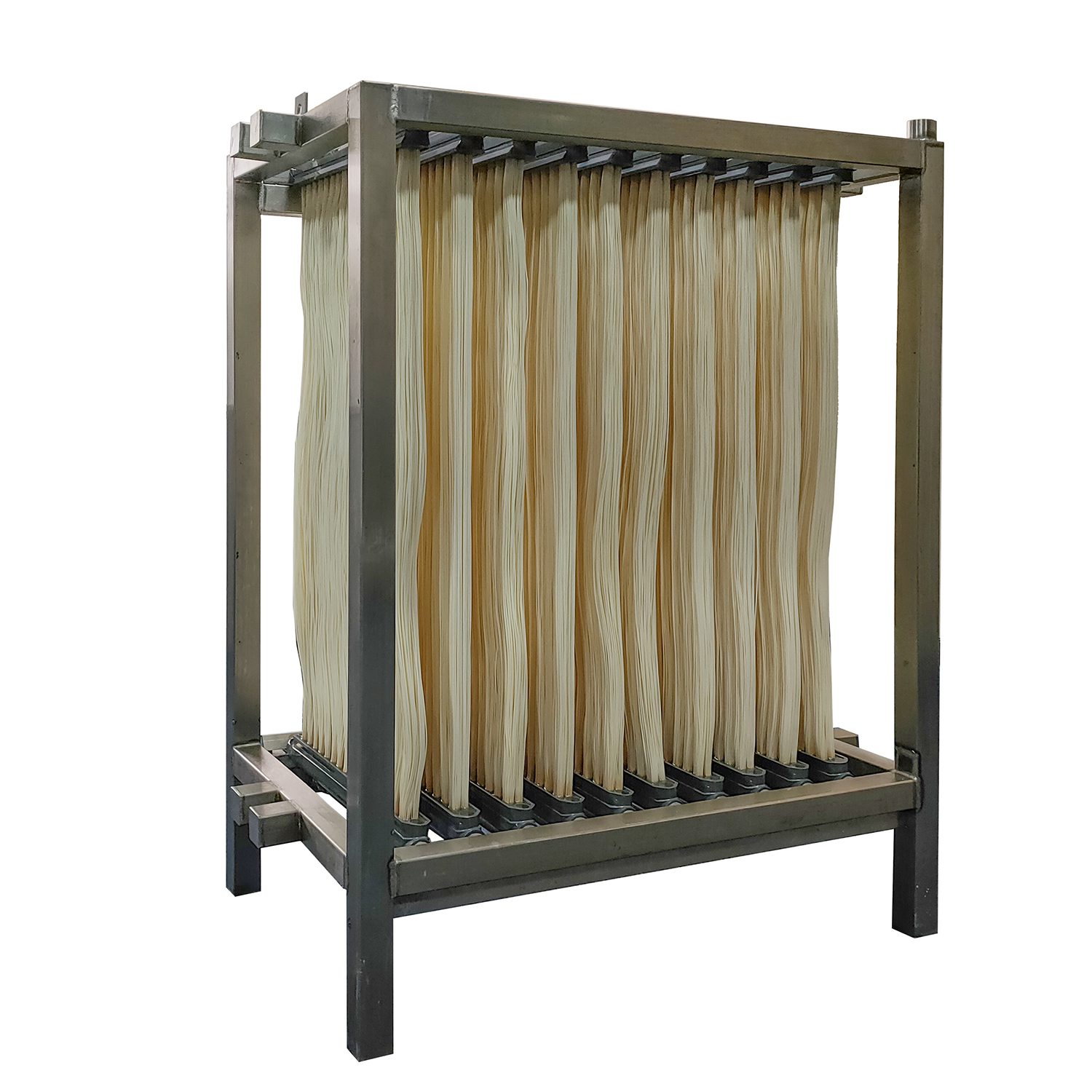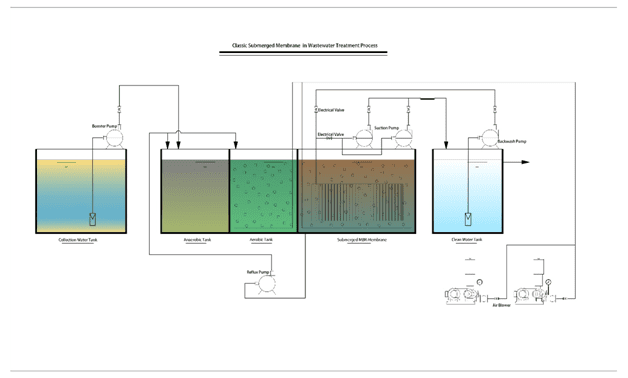Understanding the Basics of Membrane Bioreactor Systems for Wastewater Management
Understanding the Basics of Membrane Bioreactor Systems for Wastewater Management
Blog Article
Membrane Bioreactors Described: Efficient Solutions for Tidy Water
Membrane bioreactors (MBRs) have emerged as a sophisticated remedy for dealing with the pressing difficulties of wastewater treatment - Membrane Bioreactor. By integrating organic procedures with advanced membrane filtering, MBRs not only improve the top quality of treated water however also decrease the spatial requirements of treatment facilities.

What Are Membrane Bioreactors?
Membrane layer bioreactors (MBRs) are sophisticated wastewater therapy systems that combine organic degradation processes with membrane filtration innovation. This assimilation enables the effective elimination of pollutants from water, making MBRs a favored choice in different applications, including metropolitan wastewater treatment and industrial effluent management.

Among the vital benefits of MBRs is their ability to create high-quality effluent, commonly ideal for reuse in watering or commercial processes. In addition, MBRs require a smaller sized footprint contrasted to standard treatment systems, making them excellent for metropolitan setups where room may be restricted.
In addition, MBRs can successfully take care of differing influent loads and are much less at risk to the impacts of harmful shocks. These characteristics add to their expanding appeal as a sustainable option for resolving the increasing demand for clean water while lessening environmental influences.
How Membrane Layer Bioreactors Job
While the operation of membrane bioreactors (MBRs) may seem complex, it basically focuses on the synergy in between organic processes and membrane purification. MBRs incorporate a biological treatment process, commonly triggered sludge, with a membrane layer separation device to deal with wastewater effectively.
In an MBR system, wastewater is first presented right into a bioreactor where bacteria break down raw material and other contaminants. The organic task minimizes the concentration of contaminants while promoting the growth of biomass. Following this organic treatment, the blended liquor is subjected to membrane filtering, which can be microfiltration or ultrafiltration, depending upon the preferred effluent quality.
The membranes serve as a physical obstacle, enabling water and small solutes to pass while maintaining suspended solids and bigger molecules. This makes it possible for the system to maintain a high focus of biomass within the activator, improving the treatment effectiveness.
Additionally, the continual splitting up of treated water from the biomass assists in a small layout and lessens the impact of the treatment center. Overall, the mix of organic destruction and membrane layer purification in MBRs leads to trusted and reliable wastewater therapy, ensuring premium effluent ideal for numerous applications.
Advantages of MBR Innovation
One of the essential benefits of membrane bioreactor (MBR) technology is its capability to generate top quality effluent with a substantially minimized impact contrasted to conventional wastewater treatment techniques. MBR systems effectively incorporate organic therapy and membrane filtration, leading to remarkable removal of impurities, consisting of put on hold solids, virus, and raw material. This capacity causes effluent that typically satisfies or surpasses rigid governing criteria for reuse and discharge.
Additionally, MBR modern technology enables higher biomass focus, which boosts the therapy performance and reduces the needed activator quantity. This compact layout is specifically beneficial in urban areas where space is limited. The operational versatility of MBR systems also means they can adapt to differing influent top qualities and flow rates, making them ideal for a wide variety of applications.
Additionally, the reduced sludge production related to MBR processes adds to reduce functional and upkeep costs. The membrane layers function as a physical obstacle, minimizing the risk of obstructing and allowing longer operational durations between cleansing. Overall, the advantages of MBR technology make it an appealing service for sustainable wastewater treatment, dealing with both ecological issues and the need for reliable resource administration.
Applications of Membrane Layer Bioreactors
With their adaptability and performance, membrane bioreactors (MBRs) locate applications sites across different markets, consisting of community wastewater treatment, industrial processes, and also water reclamation. In community setups, MBRs give a small option for dealing with wastewater, successfully eliminating contaminants while simultaneously generating top notch effluent that meets stringent regulatory standards. This makes them specifically ideal for locations with restricted room.
In industrial applications, MBR technology is used for dealing with process water, particularly in industries such as food and drink, drugs, and petrochemicals. These sectors gain from MBRs' capacity visit our website to manage high natural loads and their performance in recuperating beneficial sources from wastewater, such as nutrients and water.
In addition, MBRs play an essential role in water improvement initiatives, making it possible for the reuse of treated wastewater for watering, commercial procedures, or even as safe and clean water after more therapy (Membrane Bioreactor). Their performance in removing microorganisms and pollutants makes them a trustworthy choice for guaranteeing water high quality in various reuse applications
Future of Water Treatment Solutions
The future of water treatment solutions is poised for transformative advancements driven by technological innovation and increasing environmental understanding. As international water scarcity comes to be a pressing issue, brand-new approaches, consisting of membrane layer bioreactor (MBR) systems, are established to play a critical function in boosting the effectiveness and sustainability of water therapy processes.
Emerging technologies such as artificial intelligence and device understanding are expected to maximize treatment procedures, enabling for real-time monitoring and predictive upkeep. This will certainly improve the overall dependability and efficiency of water treatment centers. Furthermore, innovations in membrane products, such as graphene and nanofiltration, assure to raise permeation rates and lower fouling, resulting in reduced energy consumption and operational costs.
Furthermore, the assimilation of renewable resource resources right into water therapy plants will add to greener methods. The round economic climate version will also get traction, urging the healing of important sources from wastewater, such as nutrients and energy.
Final Thought

Membrane layer bioreactors (MBRs) have arised as an advanced service for dealing with the pressing challenges of wastewater treatment. By incorporating biological processes with advanced membrane layer purification, MBRs not only improve the high quality of treated water but also reduce the spatial demands of treatment centers.One of the key advantages of membrane bioreactor (MBR) technology is its capacity to generate top notch effluent with a substantially lowered impact contrasted to conventional wastewater therapy methods.With their convenience and efficiency, membrane layer bioreactors (MBRs) locate applications across various industries, including metropolitan wastewater treatment, commercial procedures, and also water reclamation.In conclusion, membrane layer bioreactors represent a substantial development in wastewater treatment innovation, integrating biological procedures with effective membrane purification to create top quality effluent.
Report this page